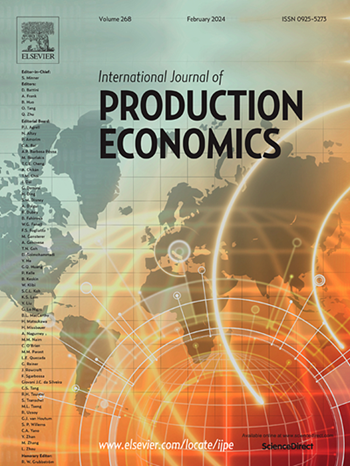Factors and their multilevel relationships in global facility location decision making: An integrative review and framework for offshoring and backshoring decisions
IF 10
1区 工程技术
Q1 ENGINEERING, INDUSTRIAL
引用次数: 0
Abstract
Research on offshoring and backshoring decisions within the domain of global facility location decisions (GFLD) has traditionally emphasized aggregated decision factors, often overlooking how individual-level perceptions, routines, and managerial interpretations interact with broader regulatory frameworks, cultural norms, and institutional pressures. This gap highlights the need to better integrate micro-strategic considerations, i.e., microfoundations, with macro-institutional conditions. Therefore, this study conducts an integrative literature review to identify and map macro- and micro-level factors and their interrelationships in the context of offshoring and backshoring decisions. For offshoring, we observe strong linkages between firm-level operational priorities and macro-level drivers such as production capabilities and institutional support, as well as managerial and organizational characteristics. In contrast, backshoring decisions are primarily shaped by internal firm capabilities and are associated with macro-level advantages such as job creation, market valuation, and regional economic growth. Our findings further highlight microfoundational influences such as managerial preferences and decision-making heuristics as central to understanding backshoring behavior. By systematically mapping these multilevel relationships, the study contributes a novel decision-making framework for GFLD that integrates strategic and institutional dimensions to support more informed location strategies.
全球设施选址决策中的因素及其多层次关系:离岸和境内决策的综合审查和框架
在全球设施选址决策(GFLD)领域中,对离岸和回流决策的研究传统上强调了总体决策因素,往往忽略了个人层面的看法、惯例和管理解释如何与更广泛的监管框架、文化规范和制度压力相互作用。这一差距突出表明需要更好地将微观战略考虑,即微观基础与宏观体制条件结合起来。因此,本研究进行了一项综合文献综述,以识别和绘制离岸外包和国内外包决策背景下宏观和微观层面的因素及其相互关系。对于离岸外包,我们观察到公司层面的运营优先事项与宏观层面的驱动因素(如生产能力和机构支持)以及管理和组织特征之间存在很强的联系。相比之下,回流决策主要由企业内部能力决定,并与创造就业、市场估值和区域经济增长等宏观层面的优势有关。我们的研究结果进一步强调了微观基础的影响,如管理偏好和决策启发式是理解回流行为的核心。通过系统地绘制这些多层次关系,该研究为GFLD提供了一个新的决策框架,该框架整合了战略和制度维度,以支持更明智的选址策略。
本文章由计算机程序翻译,如有差异,请以英文原文为准。
求助全文
约1分钟内获得全文
求助全文
来源期刊
CiteScore
21.40
自引率
7.50%
发文量
266
审稿时长
52 days
期刊介绍:
The International Journal of Production Economics focuses on the interface between engineering and management. It covers all aspects of manufacturing and process industries, as well as production in general. The journal is interdisciplinary, considering activities throughout the product life cycle and material flow cycle. It aims to disseminate knowledge for improving industrial practice and strengthening the theoretical base for decision making. The journal serves as a forum for exchanging ideas and presenting new developments in theory and application, combining academic standards with practical value for industrial applications.

 求助内容:
求助内容: 应助结果提醒方式:
应助结果提醒方式:


